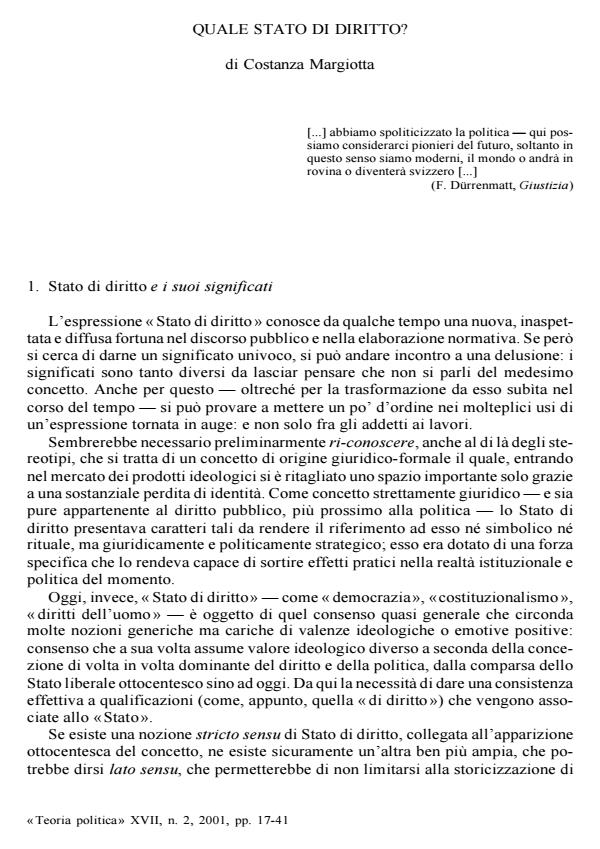Quale stato di diritto?
Journal title TEORIA POLITICA
Author/s Costanza Margiotta
Publishing Year 2001 Issue 2001/2
Language Italian Pages 25 P. File size 69 KB
DOI
DOI is like a bar code for intellectual property: to have more infomation
click here
Below, you can see the article first page
If you want to buy this article in PDF format, you can do it, following the instructions to buy download credits

FrancoAngeli is member of Publishers International Linking Association, Inc (PILA), a not-for-profit association which run the CrossRef service enabling links to and from online scholarly content.
This article considers a particular form of government traditionally refer to as rule of law. It focuses on its historical orgins with special emphasis on the German experience, and analyses the legal-philosophical ideas that founded the «Rechtsstaat». In the light of the present discourse of constitutionalism, the article considers consistently the ideas and values underpinning the rule of law. These principles (formal legality, certainty of law, separation of powers) seem to be necessary to the legal character of the State. They are, however, inadequate if one wants to understand the difference between the form and the substance of the rule of law. If we don’t make any innovations in the facts and in the language, it seems audacious to continue using the notion of rule of law. These innovations, though, should not be used only to justify the State (or the government) on the formal level of procedures. This article also points out that this concept has a new and large success not only in national constitutional law but also in the EU law. This success should be very cautiously analized and assessed. Indeed, it is important to avoid thinking that the simple reference to the formal sense of the rule of law is sufficient for considering a political system as a genuine constitutional, democratic and social government (State).
Costanza Margiotta, Quale stato di diritto? in "TEORIA POLITICA" 2/2001, pp , DOI: